What Copywriters Need to Know about SEO in 2020
July 31, 2020 • Sophie Luo

Search engine optimization changes incredibly fast. What works to improve search engine ranking position today might not be what does the trick next week or a few months from now. Google constantly works to provide a better experience to consumers, which in the end tends to shuffle the deck when it comes to what sites rank where during any particular algorithm iteration.
As a writer or digital marketer focused on creating great content, you don’t always have the time to keep up with the latest best practices. In fact, unless reading up on the latest trends is something you do for fun, there’s a good chance you’ve missed a change or two along the way.
But that’s okay. We’ve put together this post to show you what has changed over the last few years and how you can adapt your process accordingly.
What’s Changed
Before we can talk about how you need to adapt your content strategy, we have to first talk about what’s changed in the industry over the last few years.
Way back in 2011, Google’s biggest challenge was matching content with searches. It’s an almost unimaginable task, picking 10 results out of billions of web pages, especially given that 20% of searches have never been asked before.
Luckily, technology has rapidly advanced and new methods of machine learning have helped Google solve this challenge to understand both keyword searches and content needs.
In today’s era of search, the challenge Google faces is different. Now the focus is on identifying “quality content”. Because when it all comes down to it, the search engine giant wants to accomplish user satisfaction, ensuring that it is only providing results that maximize value to the user.
As a result, engagement metrics such as bounce rate and time on site are now the main factors when determining search rankings.
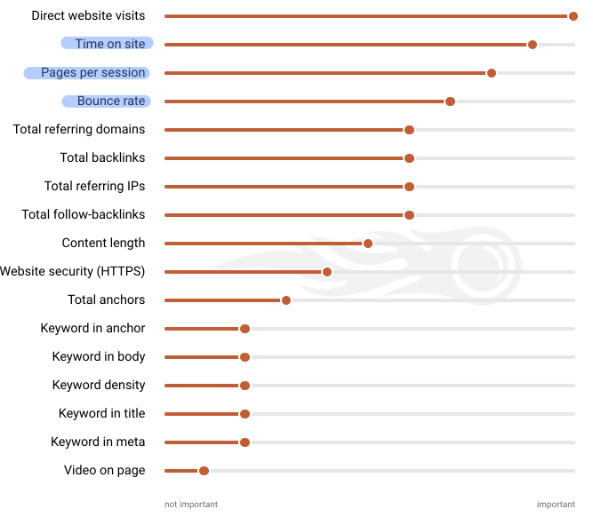
Why Old School SEO Doesn’t Cut It Anymore
So… This leads us to why old school methods of getting a site to rank just don’t cut it anymore.
Previously, it was all about choosing and using a handful of keywords accordingly at an optimal density for the overall word count of the piece.
An example of this outdated way of thinking is the popular Yoast plugin for WordPress. This wildly popular tool helps writers choose and use a focus keyword in the title, description, and body of a blog post.

This was useful during a time when Google had a limited understanding of the meaning and knowledge behind a specific content piece. Basically, the keywords you used helped the search engine match what people were looking for to particular content.
Now that Google is focused on gauging the quality of content, it’s not enough to simply make your content accessible. The key is to take a more holistic approach to SEO and think of the value you add to the reader as being your main lever for optimization.
How Copywriters Need to Adapt
As a copywriter, it is your job to adapt to these changes and keep various best practices in mind as you create content. Go beyond keyword-focused tools like Yoast and invest in resources that assist you in understanding what your target audience expects to read.
One easy way to accomplish this on your own is to open up the top search results for a given keyword. Then, carefully review the search engine results page (SERP) and look for patterns in the content. For example, for a query like “how to cut hair”, you’ll quickly notice that the top results all mention how to cut hair specifically “at home” and “on your own”, giving you insight into your audience’s expectations.
Another place to examine carefully is the “People Also Ask” box. Since these are real questions that people are searching for, it is an accurate way to understand the various search intents your audience has behind any given search.
You can save time by automating the research process, using content optimization software such as Topic.
To use Topic, first enter a focus keyword, which is the search query that your content is targeting:

From there, the system will analyze the top results in Google and generate a content brief.
The brief is a research document that details how an article should be written to maximize its value to readers: different subheadings to use, frequently asked questions to answer, and terminology that should be included. The idea is that since Google is constantly testing which content resonates with a given query, the top results are the best match for what readers are looking for.
Let’s walk through an example of the insights a content brief can provide. We will use “how to water a fiddle leaf fig” as the focus keyword for this example.
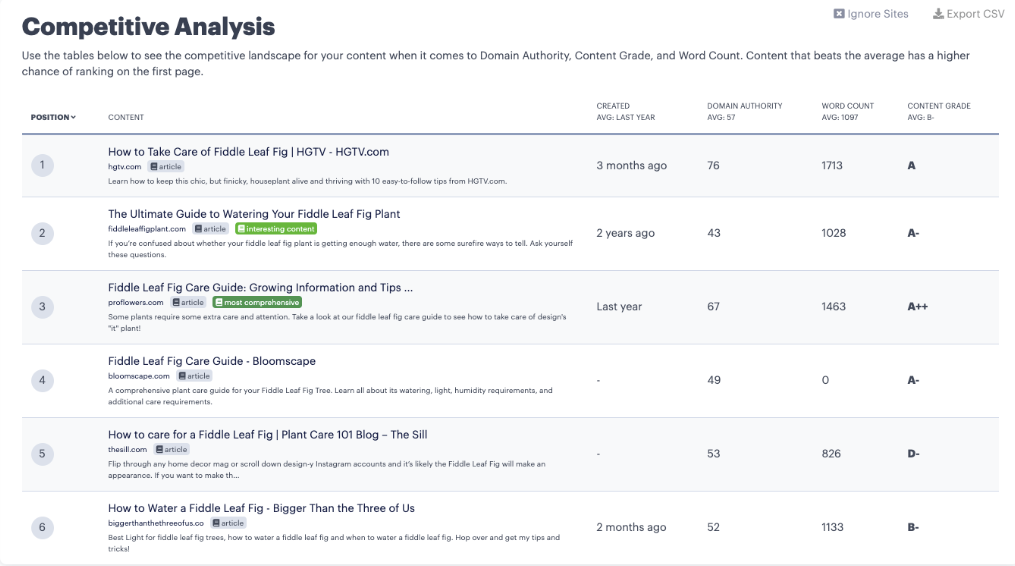
Here we see the top results for this term as well as when the content was created, the domain authority, word count, and content grade. The green labels provide an indication of content that is outperforming its domain authority.
One key observation from this table is that although the keyword is “how to water a fiddle leaf fig”, many of the top results are general care articles. The one article that is outperforming its authority is the guide specific to watering a fiddle leaf fig. This indicates that there is an opportunity to rank for this keyword by creating a watering-specific guide.
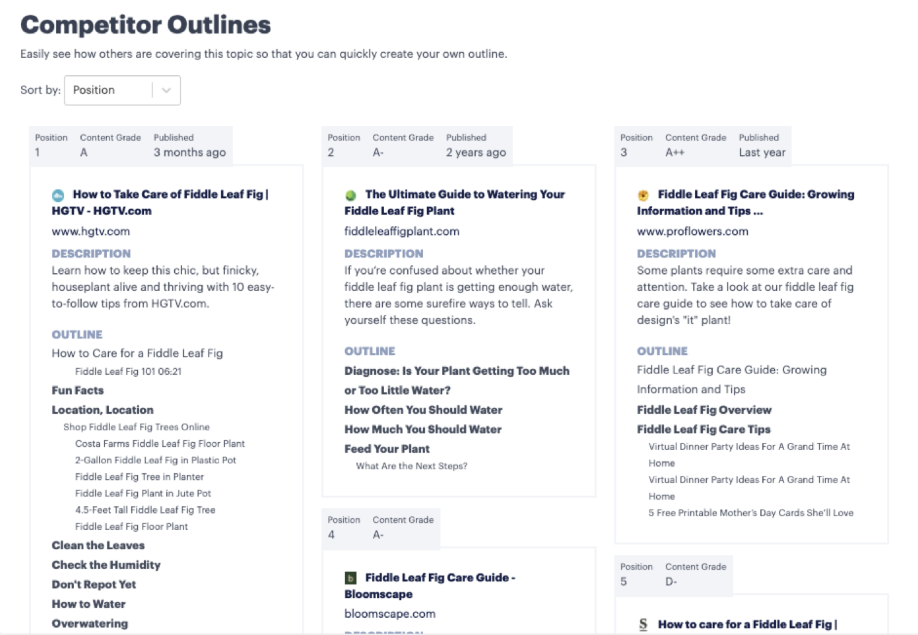
The next section of the brief shows outlines extracted from the top-ranking articles. Here we can see patterns in how others have taken the subject and broken it down into easier to understand pieces. Here you can click on any of the headings to add them to your outline so that you can begin creating a structure for your content.
It’s essential to creating compelling headings that quickly direct your reader to the information they’re looking for. Readers spend just a second or two before deciding whether to bounce out of the page, and the headings of an article are the primary factor in that decision.

The brief also aggregates questions readers are asking around the focus keyword from sources such as Google’s People Also Ask box, Google Suggest, and Quora.
Even for a relatively straightforward search like “how to water a fiddle leaf fig”, you can see that there are a variety of related questions. Answering these questions in your content makes it more valuable and relevant.
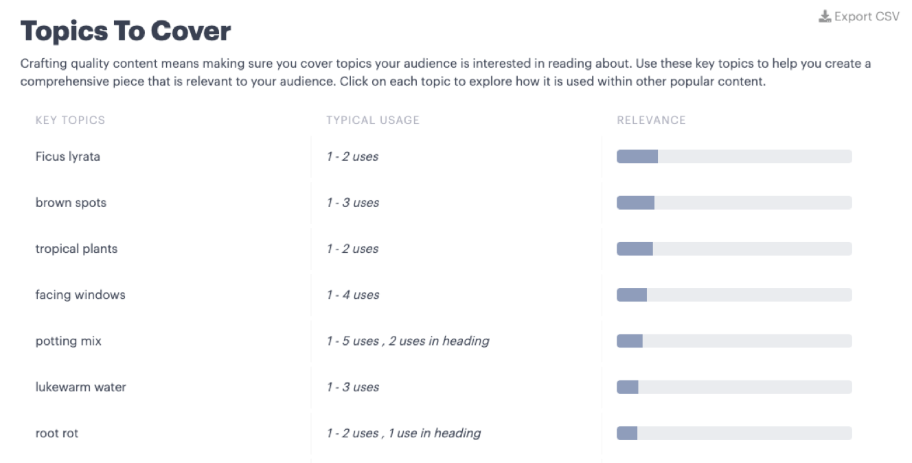
Finally, the last section of the brief are the topics to cover. Here you can find specific terms that are important to use in the content. For example, “root rot” is a type of disease that fiddle leaf figs are susceptible to. 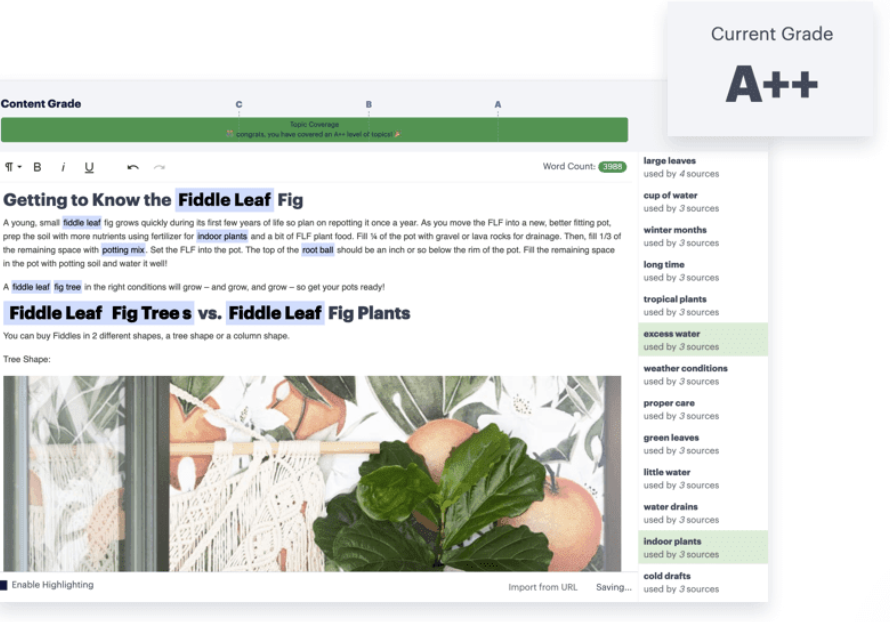
After you finish your draft, pasting it into the Content Grader shows you any gaps you have and helps you fill in any holes, ensuring consistent content quality.
The dual benefit of using a research tool is that you can both scale up the content creation process and also improve content quality. This can have dramatic impacts on a content team’s bottom line. Below is an example of what the impact can look like:
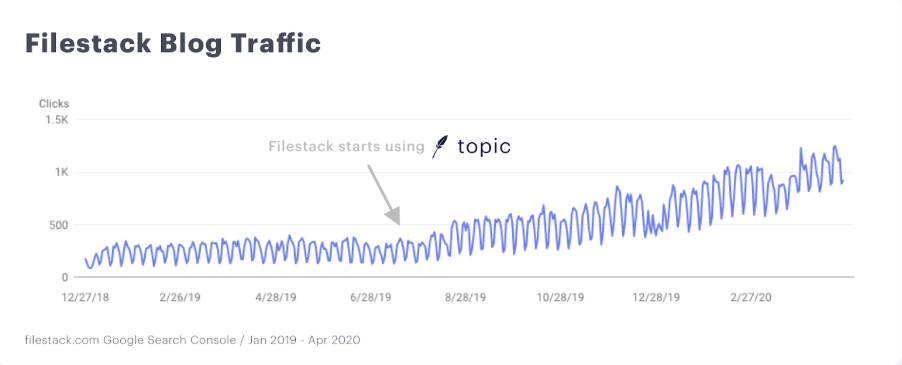
Wrapping It Up
While much has changed with Google over the years, one fact still remains the same. Engaging and informative copy is still incredibly important. And although SEO has always been technical, it is no longer as arcane as it used to be. The copywriter has more influence than ever in how a piece of content will rank, but only if they understand the fundamental principles in what it takes to rank.
Author
Ryo Chiba is the cofounder of Topic, a content research and optimization tool. At Topic, he likes to think about new ways to help writers spend less time doing rote work and more time exercising their creativity.


